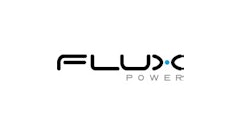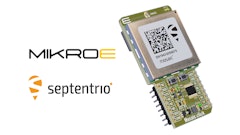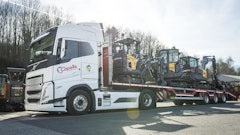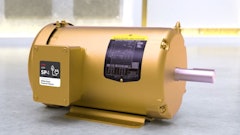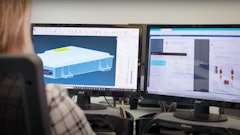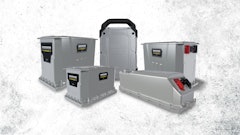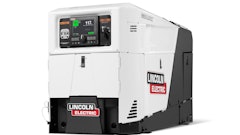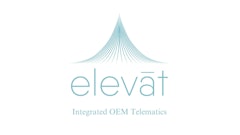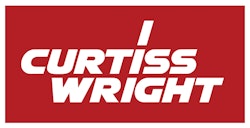
Curtiss-Wright Corporation has reported financial results for the first quarter ended March 31, 2017.
First Quarter 2017 Highlights
- Diluted earnings per share (EPS) of $0.73, ahead of expectations; EPS included a discrete tax benefit of $0.09, as defined herein;
- Net sales of $524 million, up 4%, including 3% organic growth;
- Operating income of $51 million;
- Operating margin of 9.8%, including 110 basis point dilution from acquisitions;
- New orders of $644 million, up 2%, driving book-to-bill to 1.23;
- Backlog of $2.1 billion increased 7% from December 31, 2016; and
- Share repurchases of approximately $12 million.
Full-Year 2017 Business Outlook
- Maintaining operating margin guidance range of 14.6% to 14.7%;
- Increasing EPS guidance by $0.10 to new range of $4.40 to $4.50, primarily due to the adoption of ASU No. 2016-09 for share-based compensation; and
- Maintaining free cash flow guidance range of $260 million to $280 million.
“Our first quarter results were ahead of our expectations as solid 4% top-line growth drove a stronger EPS performance than anticipated,” says David C. Adams, Chairman and CEO of Curtiss-Wright Corporation. “While our overall profitability was negatively impacted by the first-year purchase accounting costs associated with our recent acquisition of Teletronics Technology Corporation (TTC), we achieved higher organic sales and operating income growth in each of our segments in the first quarter.
“We are off to a solid start to 2017 and anticipate steady, sequential margin improvement over the remainder of the year. Our ongoing commitment to margin expansion is driving increased profitability and enabling us to continue mitigating several challenging end market conditions. Overall, we believe that our continued focus on delivering solid profitability and free cash flow, maintaining a balanced capital allocation and driving for top-quartile financial performance will continue to enhance shareholder value.”
First Quarter 2017 Operating Results from Continuing Operations
Sales
Sales of $524 million in the first quarter increased $20 million, or 4%, compared with the prior year, reflecting a $15 million, or 3%, increase in organic sales, and a $10 million, or 2%, contribution from acquisitions, partially offset by $5 million, or (1%), in unfavorable foreign currency translation. Higher organic sales primarily reflect improved industrial demand in the Commercial/Industrial segment and higher AP1000 revenue in the Power segment. Higher Defense segment sales principally reflect the contribution from our recent acquisition of TTC, completed in early 2017.
From an end market perspective, sales to the defense markets increased 5%, while sales to the commercial markets increased 3%, compared with the prior year.
Operating Income
Operating income in the first quarter was $51 million, a decrease of $6 million, or 11%, compared with the prior year, primarily due to purchase accounting costs from the recent TTC acquisition in the Defense segment and higher non-segment expenses. These costs were partially offset by increased operating income in the Commercial/Industrial segment resulting from higher sales, as well as higher operating income on the AP1000 program in the Power segment.
Operating margin was 9.8%, a decrease of 160 basis points over the prior year, reflecting the dilution from recent acquisitions partially offset by the benefits of our ongoing margin improvement initiatives. Excluding 110 basis points in margin dilution from acquisitions, operating margin would only have been down 50 basis points to 10.9%, primarily due to higher non-segment expenses and changes in sales mix compared with the prior year.
Non-segment Expense
Non-segment expenses increased by $3 million compared with the prior year, principally due to higher foreign currency transactional losses.
Net Earnings
First quarter net earnings were nearly flat compared with the prior year, as lower operating income and higher interest expense were mainly offset by lower taxes. Effective tax rate for the current quarter was 20.9%, a decrease from 31.0% in the prior year, principally driven by our adoption of Accounting Standards Update (ASU) 2016-09 Improvements to Employee Share-Based Payment Accounting, which resulted in a discrete tax benefit of $4.0 million. The adoption was on a prospective basis and therefore had no impact on prior years’ results. Excluding this discrete item, our effective tax rate for the current quarter would have been 30.5%.
Free Cash Flow
Free cash flow, defined as cash flow from operations less capital expenditures, was ($35 million) for the first quarter of 2017, a decrease of $97 million compared with the prior year. Net cash provided by (used for) operating activities decreased $95 million to ($25 million), primarily due to lower advanced payments on the AP1000 program and the unwinding of our interest rate swaps, which benefited prior year results. Capital expenditures increased by approximately $2 million to $10 million, related to the completion of the facility consolidation in the Commercial/Industrial segment.
New Orders and Backlog
New orders of $644 million in the first quarter increased 2% compared to the prior year, as higher orders within the Defense and Power segments were partially offset by lower orders within the Commercial/Industrial segment. Backlog of $2.1 billion increased 7% from December 31, 2016, due to gains in all three segments.
Other Items – Share Repurchase
During the first quarter, the company repurchased 125,000 shares of its common stock for approximately $12 million.
Full-Year 2017 Guidance
The company is updating its full-year 2017 financial guidance.
- Full-year 2017 guidance includes the acquisition of TTC, which adds $65 million in sales to the Defense segment, and is breakeven on operating income and earnings per share, including purchase accounting costs.
- Full-year 2017 guidance reflects the impact of a discrete tax benefit of $4.0 million from the adoption of ASU 2016-09 Improvements to Employee Share-Based Payment Accounting. This change resulted in a $0.10 increase to our prior EPS guidance.
First Quarter 2017 Segment Performance
Commercial/Industrial
Sales for the first quarter were $279 million, an increase of $4 million, or 1%, over the prior year. Organic sales increased 3%, excluding $4 million in unfavorable foreign currency translation. In the general industrial market, the company experienced improved demand for industrial vehicle and industrial automation products, partially offset by reduced sales of severe-service valves serving the energy markets. Elsewhere, it experienced declines in the commercial aerospace market, primarily due to reduced sales to Boeing on the 737 and 787 programs. In the naval defense market, it experienced lower revenues on the Virginia-class submarine program, based on the timing of production.
Operating income in the first quarter was $31 million, up 2% from the prior year, while operating margin improved 10 basis points to 11.0%. These improvements in operating income and margin reflect higher sales and improved profitability for industrial vehicle products driven by ongoing margin improvement initiatives. This performance was partially offset by decreased profitability for industrial valves and surface treatment services, due to lower sales volumes. The company also experienced lower profitability for sensors and controls products, due to unfavorable mix. Lastly, favorable foreign currency translation added approximately $1 million to current quarter operating income.
Defense
Sales for the first quarter were $115 million, an increase of $9 million, or 9%, from the prior year. These results primarily reflect a $10 million contribution from the recent acquisition of TTC, partially offset by $1 million in unfavorable foreign currency translation. In the aerospace defense market, the company experienced higher sales of data acquisition and flight test equipment on various fighter jet programs, including the F-35 Joint Strike Fighter, as well as higher sales of embedded computing products, most notably on the Global Hawk program. Those gains were partially offset by reduced sales on several military helicopter programs. In the ground defense market, it experienced higher sales of turret drive stabilization systems to international customers.
Operating income in the first quarter was $11 million, a decrease of $6 million, or 34%, compared with the prior year, while operating margin decreased 630 basis points to 9.7%. This performance was primarily driven by purchase accounting costs related to the recent acquisition of TTC. Excluding the effects of this acquisition, operating income increased 2%, while operating margin increased 20 basis points to 16.2% compared with the prior year, driven primarily by the benefits of ongoing margin improvement initiatives.
Power
Sales for the first quarter were $130 million, an increase of $7 million, or 5%, from the prior year. These results primarily reflect higher AP1000 revenues within the power generation market, primarily on the 2015 China Direct contract, partially offset by lower aftermarket sales supporting currently operating nuclear reactors. In the naval defense market, higher revenues for development on the new Columbia class submarine program were partially offset by lower revenues on the CVN-79 aircraft carrier program as production is nearing completion, and the Virginia-class submarine program, based on the timing of production.
Operating income in the first quarter was $17 million, an increase of $2 million, or 13%, compared with the prior year, while operating margin increased 80 basis points to 12.7%. This performance was primarily driven by higher AP1000 revenues, as well as improved profitability in the aftermarket power generation business despite lower sales, reflecting the benefits of our ongoing margin improvement initiatives.




